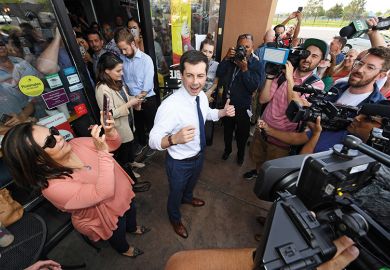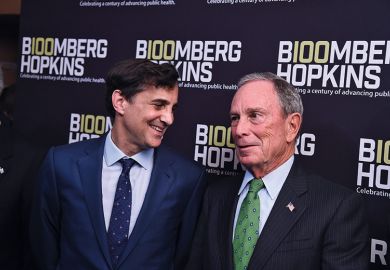Michael Bloomberg has been taking some body blows as he bids to secure the Democratic presidential nomination, but he could still have a major impact on the race – not least by coming up with a slate of higher education policies that the party might be able to get behind.
The last major contender in the battle to challenge Donald Trump for the US presidency to weigh in with a post-secondary blueprint, Mr Bloomberg’s promises include abolishing tuition fees in two-year community colleges, a doubling of federal aid for needy students, and an income-based student loan repayment system leading to eventual forgiveness.
Although it is not the pledge of four years of free college that some candidates have made, it is more generous than other proposals and it reflects what policy experts saw as a skilled distillation of the party’s common ground.
“If you were to take all of the Democrats’ plans and lay them out, and identify some of the repeating themes, and some of the better, more thoughtful proposals, that’s what the Bloomberg plan is,” said Robert Shireman, a strategist in the Clinton and Obama administrations.
The plan places Mr Bloomberg solidly “in the middle” of the free college debate, said Wesley Whistle, senior adviser for policy and strategy at the New America Foundation.
Mr Bloomberg unveiled his higher education plan in the same week that the billionaire’s heavy advertising expenditures brought him enough public support in national polls to qualify him for his first candidates’ debate. He then suffered through a performance that, on other major campaign topics, was widely viewed as damaging to his prospects.
But regardless of whether Mr Bloomberg eventually wins the presidency, experts said, his seven-page platform on higher education policy underscores the Democrats’ confidence in the potency of university finance as an issue that could give it a boost in November’s elections.
The amount of outstanding student loan debt has grown more than 150 per cent over the past 11 years. Despite such trends, the Trump administration has persisted in asking Congress to end the one existing federal student loan forgiveness programme – for those who enter public service – and has fought court battles to stop tuition fee reimbursements for defrauded students.
The Bloomberg plan does, however, share with the Trump administration and many Democrats a broad goal of improving job-oriented training, said Anthony Carnevale, research professor of public policy at Georgetown University.
The federal government currently treats most job-specific training separately from other post-secondary education, mostly through the Labor Department’s subsidies to state-run programmes. Mr Bloomberg’s plan, said Professor Carnevale, director of Georgetown’s Center on Education and the Workforce, includes a fairly sophisticated attempt to reduce such divisions, in part by encouraging states to ease credit transfers between types of institutions.
Such an approach “may save the day” for some universities attracting declining numbers of school-leavers, Professor Carnevale said.
One unique aspect of the Bloomberg plan is its call to end legacy admissions – the practice in many elite private universities of favouring applications of the children of their alumni. The plan does not suggest an outright ban, although it holds out that possibility if change does not occur voluntarily.
However, Mr Bloomberg is not seeking a ban on admissions preferences for wealthy donors. One clue about the candidate’s intent, Mr Shireman said, could be found in his philanthropic endeavours. Mr Bloomberg’s charitable foundation has done much to help low-income students, but his biggest single gift was of $1.8 billion (£1.4 billion) to his alma mater, Johns Hopkins University, proclaiming it as a move to “eliminate money problems from the admissions equation for qualified students”.
Such a massive donation, Mr Shireman said, could have helped far more students in more meaningful ways if it had been given instead to the nation’s historically black colleges and universities.
“That would make a real difference to probably several HBCUs,” he said. “But instead it was to one that already had a very large endowment, and could not be said to have demonstrated great progress on enrolling low-income students.”
Register to continue
Why register?
- Registration is free and only takes a moment
- Once registered, you can read 3 articles a month
- Sign up for our newsletter
Subscribe
Or subscribe for unlimited access to:
- Unlimited access to news, views, insights & reviews
- Digital editions
- Digital access to THE’s university and college rankings analysis
Already registered or a current subscriber?








